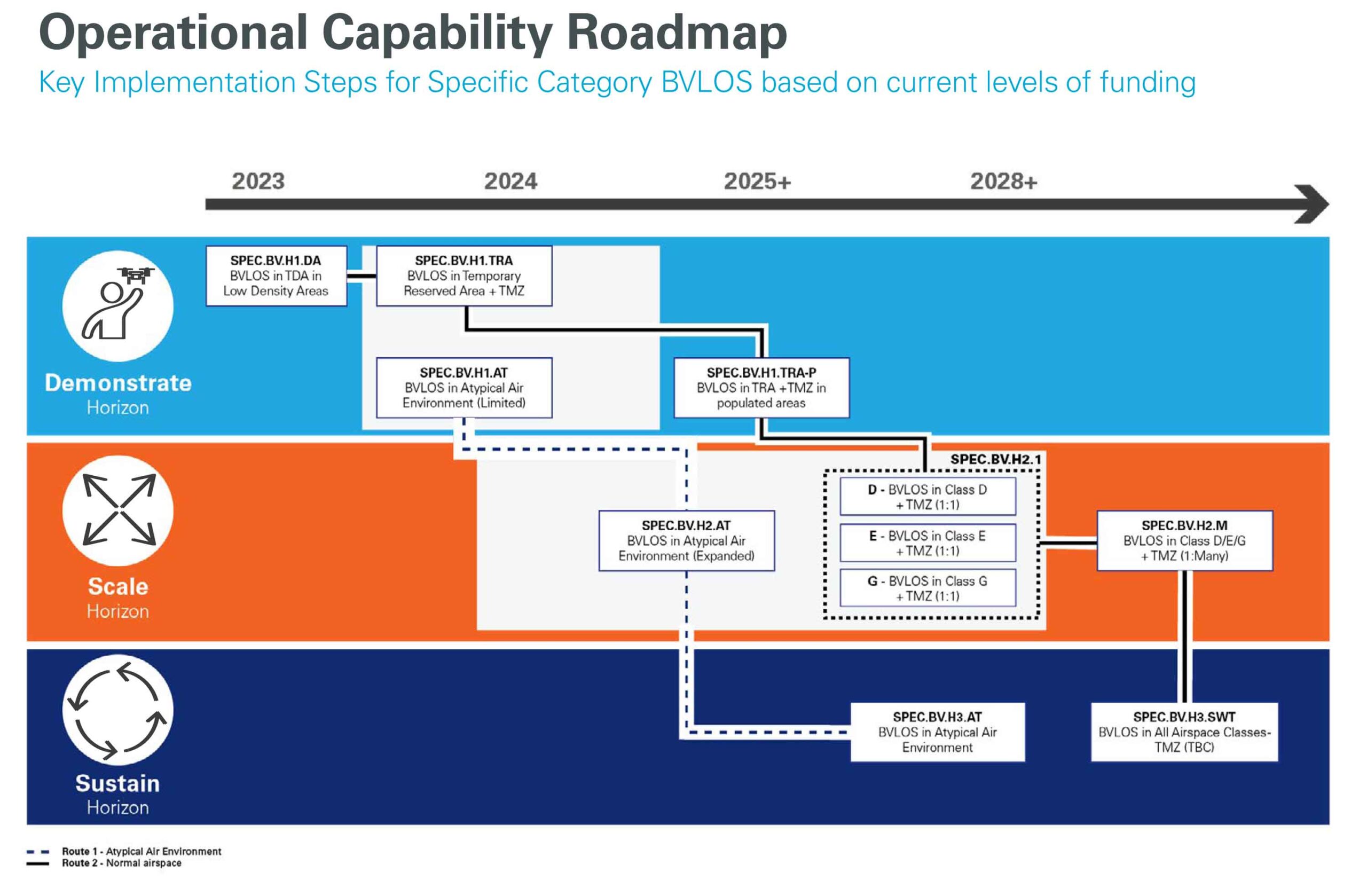Drone flying beyond visual line of sight of its remote pilot will become routine by 2027, according to the CAA’s just released ‘Roadmap’ on integrating drone operations into UK airspace.
The CAA plan hinges on two critical milestones:
- Demonstrating beyond visual line of sight (BVLOS) activities by the end of this year (2024)
- Establishing routine BVLOS operations by 2027.
Sophie O’Sullivan, Programme Director for Future of Flight at the CAA, said, “Drones have the potential to transform our lives but to make that future possible we need to lay strong foundations for the future.
“Our delivery model shows how we will protect the public while enabling this exciting new technology.
“It is vital that we create the right rules and regulations that current and new airspace users are all happy with while maintaining the highest safety standards.”
The CAA’s plan , CAP3038 (link below to download), is a highly detailed document . It shows how the drone industry can get around the basic fact that drone BVLOS operations do not have a pilot with the ability to ‘see and avoid’ as specified in the Standardised European Rules of the Air (SERA).
Something called the UK Specific Operations Risk Assessment (SORA) Digital Platform is the ‘key enabler’ apparently. The UK SORA policy is planned to be published in Q4 2024 and come into force in 2025.
The UK’s SORA has differences to the international version developed by the Joint Authorities for Rulemaking on Unmanned Systems (JARUS), admits the plan’s authors, “to accommodate national requirements”.

The CAA’s Roadmap for drone BVLOS summarised. Images: CAA
How will GA be affected?
The full answer is by no means clear yet. Crucial for General Aviation and VFR flying is what happens in Class G airspace. The CAA says that to integrate all airspace users in Class G “will require a coordinated surveillance environment”.
Air Navigation Service Providers (ANSPs) such as NATS (there are others) will be required to provide additional/enhanced air traffic management services.
The example given is a Flight Information System (FIS) with specific traffic information services which will in turn require new ground based infrastructure.
“[A] Cost recovery model [will be] required for new traffic management services,” admits the plan.
Click here to download CAP 3038 Delivering Scalable UAS BVLOS













